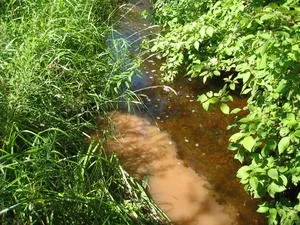ELIMINATE POLLUTANTS
4. Minimize Erosion
When planning a construction project, check with your local municipality to determine whether or not you need a permit. Be sure to have an erosion control plan in place before you begin. Depending on the type of project, there are many steps you might need to take to protect water quality in the Twin Lakes.
Preserve existing vegetation where possible to prevent erosion. Avoid parking or driving heavy machinery near trees as soil compaction can damage their roots.
Build a gravel access drive to limit compaction of your site and to limit mud tracked out to the street from vehicles.
Properly install a silt fence or straw bales to trap sediment on the downslope side of your lot.
Protect soil piles with silt fences and by keeping them covered with tarps or plastic. Locate the piles away from the road or nearby water to lessen the chance of sediment being transported off site.
Replant the area as soon as possible so that there is not bare soil. Cover lawn areas with 4-6” of topsoil and then seed and mulch with straw.
Fence the construction area to limit activity to only the necessary area of the site. This will help reduce erosion and unnecessary soil compaction of the rest of your property.
Divert runoff around disturbed areas to minimize erosion.
image source: familyhandyman.com
Last Options
Silt fences are a last line of defense for stopping sediment from washing off your site. They should not be relied upon as the sole solution for erosion control and they must be installed properly in order to be effective.
This site was seeded and mulched with straw to cover the bare soil and the silt fence stayed in place until the grass seed had a chance to grow and stabilize the soil. Larger plants were also planted to help revegetate the disturbed area. It is important to keep erosion control measures in place until the site has been stabilized.


